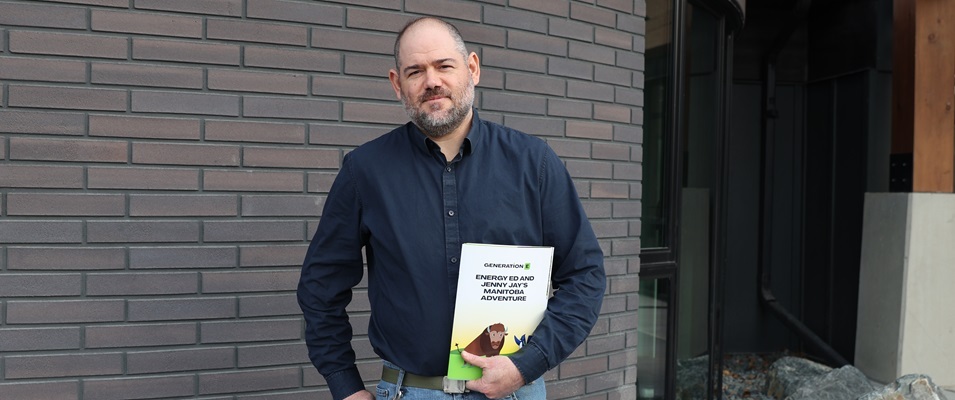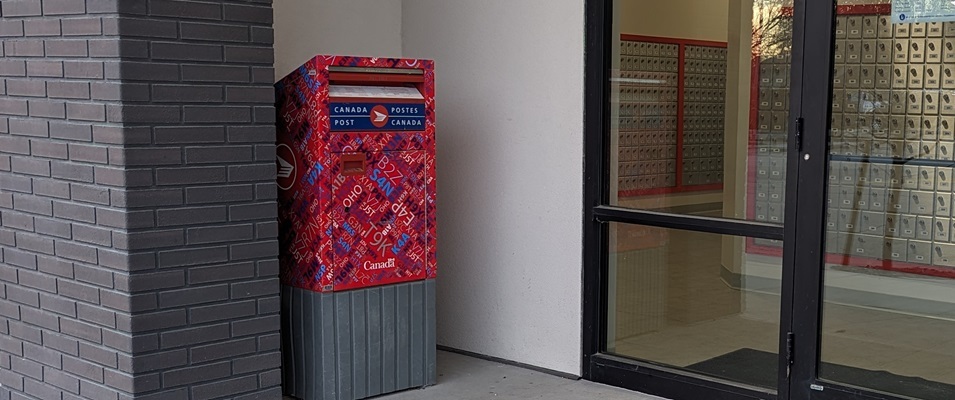
On May 22, at a meeting of Richot’s council, Albert and Shelley Sumka found themselves at the centre of a controversy. Too late to register for a voice to defend themselves at the meeting, the Sumkas reached out to The Citizen to have their side of the story told.
Council chambers were filled to capacity with the Sumkas’ neighbours, most of them living along Marchand Road, who had come to support Jim Wilderman in his plea for council to do something about the use of heavy trucks on Marchand Road.
The Sumkas felt singled out, having found out about the meeting accidentally and only hours prior to its start. They attended that night and were surprised to discover that some points made by Wilderman in his slide presentation pointed fingers directly at them.
According to the Sumkas, most of those points were unfairly presented.
It is true that the Sumkas run a trucking company, and its home base is located at their residence along the very easterly end of Marchand Road, bordering the Red River.
It is also true that the Sumkas bring in loads of unwanted fill, stockpiling it on their property in preparation for the region’s next big flood.
What is untrue, they say, is that their property is being used as a dumping ground for fill that has no business being there. It’s also untrue, as was speculated at the meeting, that the Sumkas earn any profit for collecting unwanted fill on their property.
Finally, they’d like to make it clear that, on April 24, when Wilderman counted 192 trucks running past his property, none of the Sumkas’ trucks were among them.
Being in the industry, though, Albert happens to know the names of 16 other trucking companies that were delivering fill to an empty lot along Marchand Road that day.
It’s a common occurrence, he says, for one primary hauling outfit to hire other outfits to help them out when a lot of fill needs to be moved quickly.
Sumka is often at the receiving end of those jobs himself.
Oftentimes, this fill comes from big construction jobs in Winnipeg and is delivered to locations where property owners have requested it.
Areas along the Red River where development is occurring, such as Marchand Road and in Grande Pointe, are frequent end points for fill. One low-lying property within a flood zone can require tens of thousands of yards of fill to bring it up to provincial flood standards. This requires thousands of truck loads passing through over a one- to two-week period.
It’s not convenient for established residents who live in these areas, Albert acknowledges, but it’s a reality of life in a flood zone. Every one of the couple’s neighbours who live along Marchand Road, Albert says, will have required vast quantities of fill brought in on convoys of trucks at one time prior to their home’s construction.
So when these same residents make a formal complaint to the RM regarding high levels of trucks headed to other developing properties along their stretch of road, the Sumkas don’t get it.
“You see how many houses there are [along Marchand Road] that are up on a hill?” Shelley asks. “Well, that doesn’t just appear there. We helped every one of them put those hills there. We’re all in this together. We were all patient when it was their turn to have fill hauled in. Now it’s someone else’s turn and they don’t have the patience for it.”
Five generations of Sumkas have lived on this land at the end of Marchand Road. Albert’s parents and grandparents were once successful market gardeners here.
Growing up here as a child, Albert says he was taught from a young age to respect the rich soil on this acreage. His family also had a great respect for the bordering river and its banks and would do nothing to compromise its integrity, as was suggested at the meeting.
But in 1997, as floodwaters moved in fast and furious, Albert had to use soil from his own property to build a massive dike. His was the only home in the area to survive the onslaught of water.
Later, the provincial government required all properties in flood zones to have standardized dikes or pads. For Sumka, it meant raising his dike to 20 feet in height. Theis produced a massive dugout in his yard that needed to be filled.
Since that time, Albert has been bringing home unwanted fill by the occasional truckload to fill the dugout. In more recent years, the province has mandated that properties situated in flood zones be brought up even higher, to one-in-200-year levels. He worries that when that devastating year arrives, he won’t be insured if he’s not ready for it.
Even so, Shelley says, there’s always a need for dirt when you live in a flood zone.
“That’s why we keep on hauling, or at least try to, because you just get past one flood and then there’s another,” Shelley says. “Whether it’s overland flooding or a big flood, it’s just always something. But we’re dealing with it. We’re choosing to live here and we’re happy here.”
The Sumka land is unique in many ways. Its shape is like that of a light bulb, surrounded on the south, east, and north by the winding river. It is also the highest spot along Marchand Road, according to Albert, and always has been.
So in years when overland flooding occurs, the water collects along their west perimeter, turning the property into a temporary island.
Having spent his entire life on this land, Albert understands that the water here flows north as opposed to eastward over Sumka land toward the river. For this reason, when neighbours imply that it’s Albert’s flood protection efforts that cause overland flooding on their properties, he disagrees and says a little research would prove that.
Finally, the Sumkas were disappointed by the suggestion that the gate erected on the road leading up to their property is there to hide nefarious goings-on. Nothing could be further from the truth, they say. Rather, the gate prevents people from wandering onto their property without permission in order to get to the riverbank, which was a regular occurrence at one time.
In 2011, the Sumkas and the RM of Ritchot formalized an agreement that allowed the Sumkas to take informal ownership of the access road leading up to their property. Albert, with his equipment, promised to clean and maintain this stretch for the RM at his own expense and give public works unconditional access to the riverbank when needed.
In return, the RM agreed to build a vehicle turnaround just before his property line. According to Albert, the RM project began but was halted due to drainage concerns.
Albert is proud of his lifelong claim to this land and still, to this day, helps out neighbours who have been there as long as he. Being neighbourly, he says, has always been his way of life.
“When I grew up as a kid, everybody on this strip were market gardeners,” Albert says. “It didn’t matter where you went, the neighbours were all out in the gardens working together.”
Today, he says, things have changed. And after the May 22 council meeting, he’s convinced more than ever that neighbourliness is a thing of the past.
After the 1997 flood, the family ended their long history of market gardening on a large scale. Their main bread and butter became the hauling company they now operate.
As of this spring, though, they say that livelihood too is at risk.
“The RM has halted all unpermitted hauling along Marchand Road following complaints from numerous property owners living along that road,” assistant CAO Dominque Lemoine told The Citizen. “All property owners in the RM who are depositing fill or soil to develop their property are required to have a development permit or other relevant permit from the province.”
Development permits will be issued by the municipality and, according to Lemoine, will provide the RM with a better understanding of proposed developments, any potential nuisances that fill hauling may incur, as well as impacts it may have on infrastructure.
This will give council more control to place conditions on development or refuse a permit altogether.
According to the Sumkas, though, these permits aren’t coming out of the RM office with any great speed. Because the new bylaw is directed at the entire Ritchot region, and because Ritchot is the Sumkas’ main hauling area, it’s brought his trucks to a standstill.
The couple has since laid off three of their four employees and are unsure as to the impact this policy will have on them in the long-term.
“I thought we were respected in the community,” Albert says. “But now, they’ve taken away my livelihood is what they did.”



















